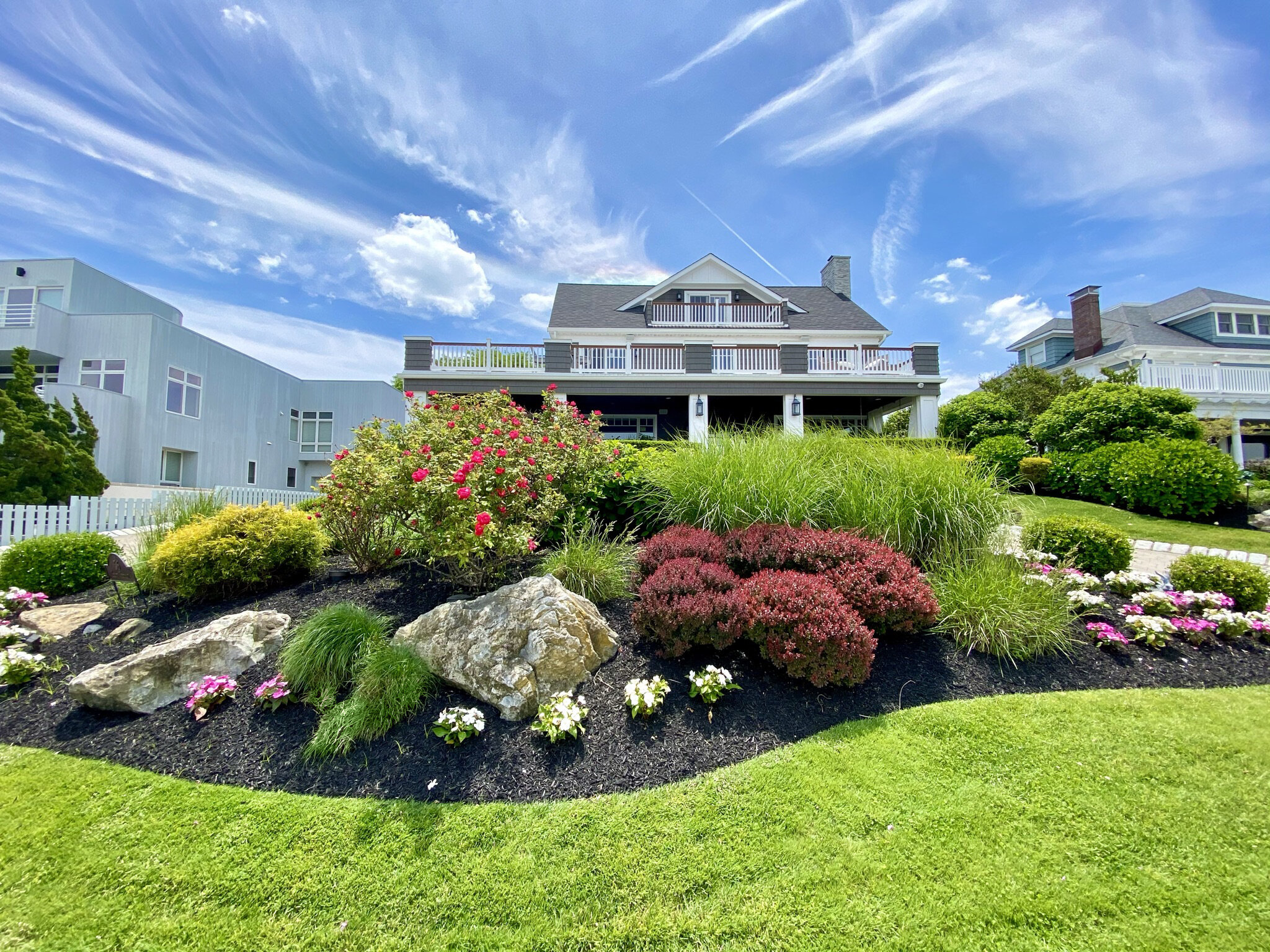Why Selecting the Right Palm Desert Landscaping Service Matters
Why Selecting the Right Palm Desert Landscaping Service Matters
Blog Article
A Comprehensive Overview to Creating and Implementing Effective Landscaping Solutions
The art and scientific research of landscaping extend beyond plain aesthetic appeals; they involve a thoughtful integration of style principles, ecological stewardship, and sensible implementation. What techniques can one utilize to guarantee these landscapes not just grow however likewise thrive in harmony with their surroundings?

Understanding Landscape Style Concepts
One may wonder what foundational components add to effective landscape layout. At its core, successful landscape design depends upon numerous key concepts that lead the arrangement and choice of components within an area. These concepts consist of unity, rhythm, balance, and percentage, each offering to produce a harmonious outdoor environment.
Unity refers to the cohesive partnership among various components, making certain that they interact visually and functionally. Balance can be attained with symmetrical or asymmetrical plans, enabling the landscape to feel stable and inviting. Percentage entails recognizing the scale of aspects in connection to each other and the surrounding environment, promoting aesthetic harmony and comfort.

Evaluating Your Outdoor Room
Prior to carrying out the concepts of landscape design, a complete assessment of your outside area is essential. This first analysis helps define the scope of your landscaping task and makes certain that your style straightens with the unique characteristics of your residential or commercial property. Begin by evaluating the dimensions of your area, taking precise dimensions to understand the offered location for various aspects such as patios, yards, and paths.
Following, observe the existing attributes of your landscape, consisting of topography, soil quality, and drainage patterns. These variables substantially influence plant selection and positioning. Additionally, examine the sunshine direct exposure across various locations throughout the day, as this will impact the kinds of plants that flourish in your yard.
Take into consideration the microclimates developed by frameworks, trees, and other barriers, as they can influence temperature level and wetness levels. Take note of any type of existing plants or hardscape elements that you want to eliminate or maintain. This detailed evaluation prepares for a well-informed and effective landscape design service, guaranteeing that your layout is not only cosmetically pleasing but also useful and lasting for years ahead.
Sustainable Landscape Design Techniques
These practices not just promote ecological balance however likewise improve the aesthetic and practical value of a landscape. Carrying out effective irrigation systems, such as drip watering, reduces water waste and makes sure that plants obtain adequate moisture (Palm Desert Landscaping).

An additional effective strategy is the critical placement of trees and hedges to supply natural windbreaks and shade, hence decreasing energy costs (Palm Desert Landscaping). Rain yards can be incorporated right into the landscape design to take care of stormwater runoff efficiently, filtering contaminants before they go into rivers
Choosing the Right Plants
Selecting the right plants for your landscape is important to attaining both aesthetic appeal and ecological harmony. The procedure starts with an understanding of your local climate, dirt conditions, and the details microenvironments within your landscape. Assessing aspects such as sunshine exposure, moisture degrees, and existing vegetations will certainly aid you select plants that flourish in your unique setup.
Take into consideration incorporating indigenous plants, as they are well-adapted to neighborhood conditions, require much less maintenance, and assistance regional wild animals. In addition, choosing a diverse range of types can boost biodiversity while lowering the risk of disease and insect episodes. It is important to assess the development behaviors, flowering durations, and seasonal colors of possible plants to develop a natural and dynamic landscape.
Moreover, consider the intended use the space; for circumstances, if the location will experience high foot traffic, choose durable ground covers. By thoughtfully choosing plants that line up with both your aesthetic objectives and environmental requirements, you can produce a sustainable landscape that not only boosts your residential property yet also contributes positively to the surrounding community.

Implementation and Maintenance Techniques
As soon as the appropriate plants have actually been selected for your landscape, the emphasis moves to reliable implementation and recurring maintenance techniques. Effective setup begins with appropriate site preparation, that includes dirt testing to establish nutrient levels and pH, adhered to by amending the soil click resources as required. Meticulously set up plants according to their growth practices and light requirements, guaranteeing ample click this link spacing to promote healthy and balanced development.
Watering is an important component of implementation. Establish a watering routine that thinks about the specific demands of each plant species, adjusting for seasonal adjustments. Making use of drip watering systems can enhance water efficiency and lower drainage.
Maintenance methods should be applied to guarantee the long life and vigor of your landscape. Normal jobs include weeding, mulching, and trimming to manage growth and prevent disease. Fertilization ought to be performed based on soil examinations, giving the required nutrients without over-fertilizing.
Monitoring for parasites and illness is vital; early discovery can prevent substantial damage. Seasonal changes to upkeep regimens, such as winterizing perennials and preparing for springtime growth, will guarantee that your landscape continues to be healthy and visually enticing year-round.
Final Thought
Effective execution and ongoing upkeep better make certain the long link life and vitality of landscapes. By incorporating these aspects, landscapes can be changed right into lovely, practical settings that advertise biodiversity and add favorably to area wellness.
One might question what fundamental aspects contribute to efficient landscape design. At its core, effective landscape layout hinges on a number of vital concepts that lead the setup and option of aspects within a space.Selecting the right plants for your landscape is important to accomplishing both aesthetic appeal and environmental consistency. It is vital to review the development habits, growing durations, and seasonal shades of prospective plants to develop a vibrant and cohesive landscape.
As soon as the right plants have actually been selected for your landscape, the focus moves to effective application and recurring upkeep methods.
Report this page